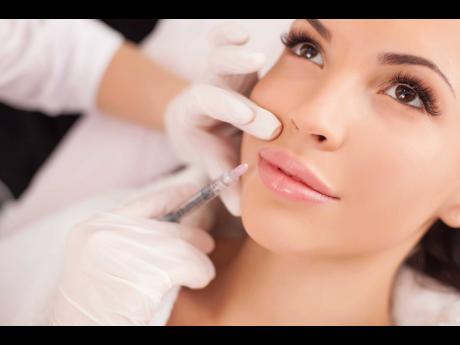Reduce ageing with injectable fillers
Injectable fillers, particularly those containing hyaluronic acid, continue to grow in popularity worldwide as a safe, non-surgical, natural-looking method of reducing the signs of skin ageing.
Hyaluronic acid is a substance that is present naturally in the skin. It holds and attracts water, thereby hydrating and adding volume to the skin. As we age, there are various changes in our skin, which include drier skin, fine lines, wrinkles, folds, and volume loss.
An injection of hyaluronic acid into the skin can instantly enhance your looks naturally, giving a 'beauty lift' or 'liquid lift' without surgery. It is also more effective than beauty creams, since it acts from within the skin. It is a popular treatment for smile lines, lines around the mouth, and refilling volume to help restore a more youthful contour to the face or hands.
The average duration of the effect of some of the latest hyaluronic acid fillers ranges from six to 12 months. It can be shorter or longer, depending on the individual's age, skin quality, lifestyle, product choice, and injection site.
These injectable fillers are designed for adult patients. Individual assessment is needed to advise patients regarding expectations and suitability, regardless of age.
Tiny needles or blunt cannulas are used, and so injections are usually tolerable. Ice and anaesthetic (numbing) creams may be applied before treatment to increase comfort. In some cases, local numbing injections can be given to reduce the pain.
After the treatment, the individual may experience redness, swelling, or bruising at the injection site. These effects resolve spontaneously within a few days after the injection, and can usually be covered up with make-up.
In professionally trained hands, serious side effects are not common. Side effects tend to be temporary, as the body naturally reabsorbs the filler over time. Very rare reactions include localised allergic reactions, prolonged firmness, abscess formation, grayish discoloration, scab and shallow scar formation, and blindness. Unwanted effects of these fillers can usually be minimised with injection of the enzyme hyaluronidase, which breaks down the filler.
AVOID TREATMENT IF ...
The treatment should be avoided in patients with:
- A history of autoimmune diseases and allergies to hyaluronic acid.
- Immunotherapeutic and 'blood thinning' medications.
- Who are pregnant or breastfeeding.
- Active skin inflammation/ infection at site of injection, for example, cold sores.
Since hyaluronic acid is reabsorbed over time, the individual can decide when to have further treatments to maintain the effects. One drawback of fillers is that they may be considered costly, especially if a lot is needed to achieve the desired results. However, the longer-lasting products may be viewed as more cost-effective than some beauty creams in the long run.
Like many things in life, the decision to have this procedure done is 'to each his (or her) own'. Less is also more with this treatment, as the aim is to enhance the individual's natural beauty as opposed to creating an overdone and unnatural look. If you are considering having this procedure done, a consultation is necessary to assess your suitability for the treatment and to discuss expectations.
- Dr Arusha Campbell-Chambers is a dermatologist and founder of Dermatology Solutions Skin Clinics & Medi-Spas; email: yourhealth@gleanerjm.com.

